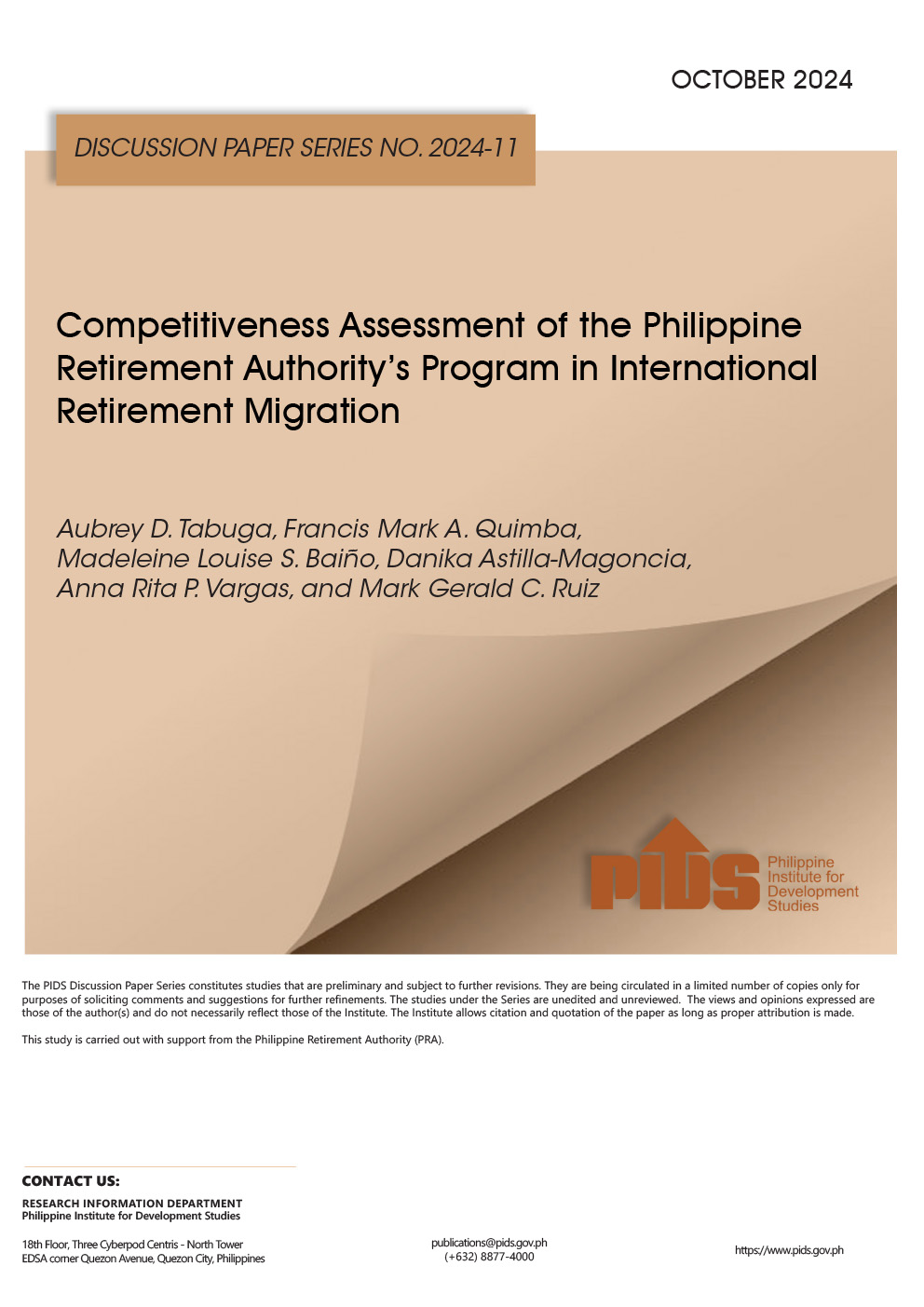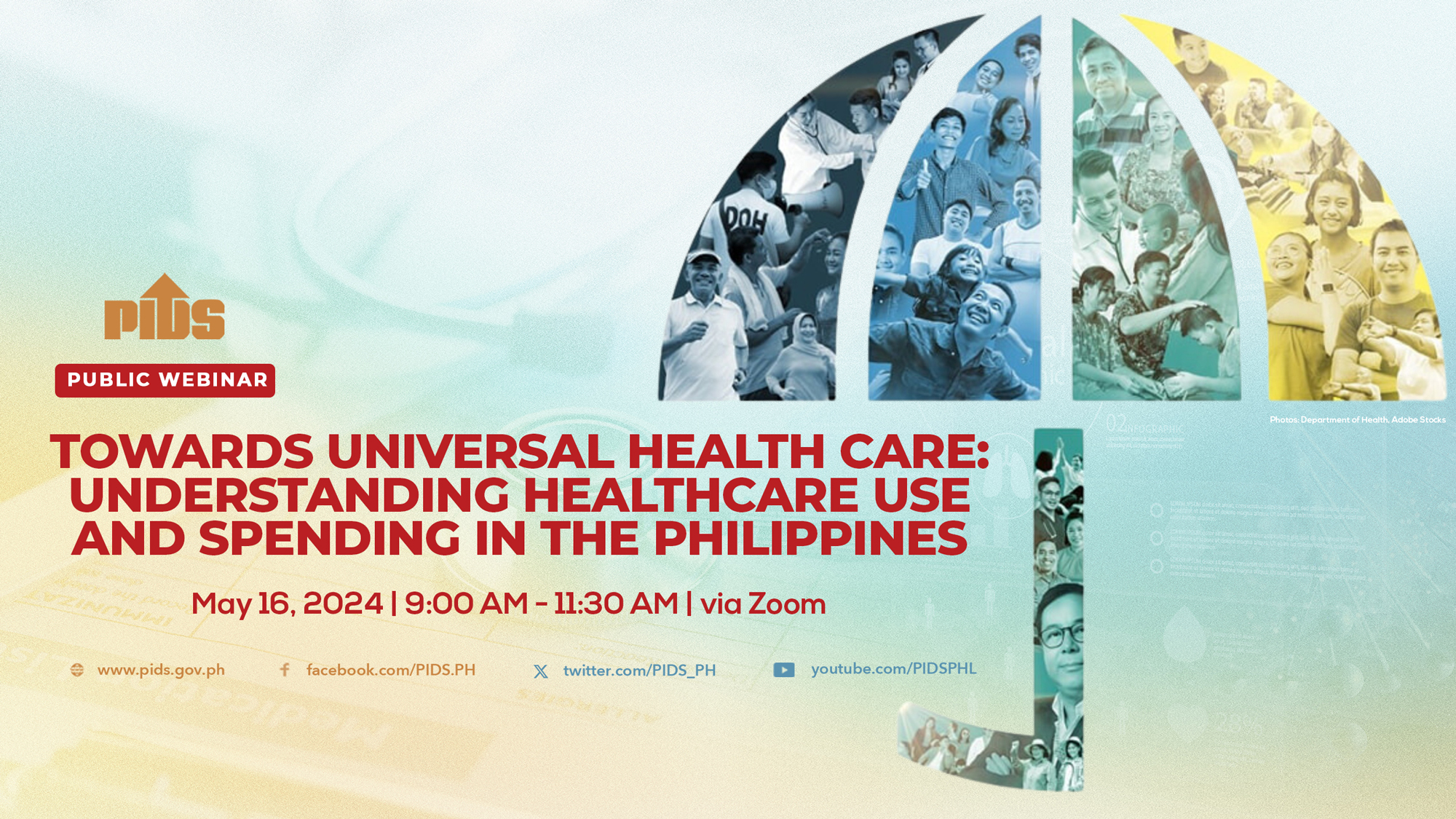LEGAZPI CITY, Feb. 9 (PIA) -- Improving the enrollment rate for the individually paying program (IPP) of the Philippine Health Insurance Corp. (PhilHealth) is an important component of the government’s goal of achieving universal health care for the country, stressed on a study by the Philippine Institute for Development Studies (PIDS).
The country aims to attain universal health care by 2016 when some 100 million Filipinos shall have been enrolled with PhilHealth.
According to PIDS in an email to the PIA Bicol Regional News Desk, one of the biggest stumbling blocks in achieving this goal is the low coverage rate in PhilHealth’s IPP, the voluntary component of the country’s social health insurance.
PIDS noted that those enrolled in the IPP scheme are individuals who opt to pay for their own membership. They generally include the self-employed, self-earning, and those in occupations without a formal employer-employee relationship.
According to the study by state think tank, the informal sector represents around 43–50 percent of the total labor force. Thus, having a 56-58 percent coverage rate for IPP at the national level at present indicates that over 40 percent of the population who do not qualify as dependents and are not employed in the formal sector have no health insurance coverage.
The study also noted that given the voluntary nature of the IPP, it has become an important point of focus for the expansion of the social health insurance in achieving universal coverage. The IPP contrasts with PhilHealth’s employed program where health insurance coverage for employees is mandatory.
Thus, for better and more efficient targeting of the sectors of the population that are otherwise difficult to capture, PIDS researcher and author of the study, Denise Valerie Silfverberg, looked into the determinants of enrollment into the IPP.
According to Silfverberg, the availability of health-care resources appears to be an important consideration in terms of the level of IPP coverage, particularly in provinces. “Bed-population and health professional-population ratios come out significantly positive. This result is an indication of the importance of having the resources at reasonable proximity,” she noted.
Silfverberg further explained that in order for individuals to take the decision to enroll into health insurance scheme, they must first see its value. Thus, availability and accessibility of health-care services, she said, is a crucial determinant in the decision to avail or not to avail of health insurance.
“For certain provinces that are more geographically constrained, government providers can address this problem through the provision of mobile clinics or the augmentation of district hospitals especially in geographically isolated areas. Both can be done through public-private partnership,” the author recommended.
The PIDS study also observed that the greater the number of private hospitals, the more likely it is for the province to have higher coverage rates. This indicates that the existence of private hospitals seemingly encourages individuals to enroll into the health insurance scheme, presumably with the notion that if care is sought, they can avail of private medical services with the use of PhilHealth.
“This recommendation is not to undermine government health services providers. By supporting the health insurance system, and in effect promoting enrollment, the consumers are able to decide which services to avail of. This fosters market competition that could encourage unsustainable public health services providers to innovate in order to compete with the rest of the market,” Silfverberg maintained.
The study also concluded that income levels do not appear to be a factor in determining the level of insurance coverage of a province. This is demonstrated by two results—the magnitude and significance of the average household income of the nonpoor population and the real income per capita of the province.
Since income does not appear to be a barrier in obtaining health insurance for the nonpoor segment of the population, it denotes that something else is. Silfverberg noted there is an impression that if the coverage offered by health insurance will not account for the majority of their health expenditures, the individual will see no need to avail of health insurance. She recommended that a study should be conducted on out-of-pocket (OOP) expenditures incurred by outpatient services. If high OOPs are established, this would be a basis, she explained, for expanding the current outpatient benefit package of PhilHealth to include those who are part of the voluntary program as well.
Lastly, it was observed that the size of certain sectors has a significant effect on the IPP coverage levels of a province. Thus, PhilHealth should target certain employment sectors such as the agricultural sector and those employed in manual labor where workers are more likely to have lower coverage rates. According to the PIDS study, identifying sectors that employ individuals who are less likely to avail of health insurance will allow for a targeted approach to achieving universal coverage.
The study also recommended the creation of programs similar to the Kalusugang Sigurado at Abot-Kaya sa PhilHealth Insurance, which partners with local nongovernment organizations and rural banks, as a way to expand into certain employment sectors that tend to have low coverage levels. (MAL/PIDS/PIA5)
The country aims to attain universal health care by 2016 when some 100 million Filipinos shall have been enrolled with PhilHealth.
According to PIDS in an email to the PIA Bicol Regional News Desk, one of the biggest stumbling blocks in achieving this goal is the low coverage rate in PhilHealth’s IPP, the voluntary component of the country’s social health insurance.
PIDS noted that those enrolled in the IPP scheme are individuals who opt to pay for their own membership. They generally include the self-employed, self-earning, and those in occupations without a formal employer-employee relationship.
According to the study by state think tank, the informal sector represents around 43–50 percent of the total labor force. Thus, having a 56-58 percent coverage rate for IPP at the national level at present indicates that over 40 percent of the population who do not qualify as dependents and are not employed in the formal sector have no health insurance coverage.
The study also noted that given the voluntary nature of the IPP, it has become an important point of focus for the expansion of the social health insurance in achieving universal coverage. The IPP contrasts with PhilHealth’s employed program where health insurance coverage for employees is mandatory.
Thus, for better and more efficient targeting of the sectors of the population that are otherwise difficult to capture, PIDS researcher and author of the study, Denise Valerie Silfverberg, looked into the determinants of enrollment into the IPP.
According to Silfverberg, the availability of health-care resources appears to be an important consideration in terms of the level of IPP coverage, particularly in provinces. “Bed-population and health professional-population ratios come out significantly positive. This result is an indication of the importance of having the resources at reasonable proximity,” she noted.
Silfverberg further explained that in order for individuals to take the decision to enroll into health insurance scheme, they must first see its value. Thus, availability and accessibility of health-care services, she said, is a crucial determinant in the decision to avail or not to avail of health insurance.
“For certain provinces that are more geographically constrained, government providers can address this problem through the provision of mobile clinics or the augmentation of district hospitals especially in geographically isolated areas. Both can be done through public-private partnership,” the author recommended.
The PIDS study also observed that the greater the number of private hospitals, the more likely it is for the province to have higher coverage rates. This indicates that the existence of private hospitals seemingly encourages individuals to enroll into the health insurance scheme, presumably with the notion that if care is sought, they can avail of private medical services with the use of PhilHealth.
“This recommendation is not to undermine government health services providers. By supporting the health insurance system, and in effect promoting enrollment, the consumers are able to decide which services to avail of. This fosters market competition that could encourage unsustainable public health services providers to innovate in order to compete with the rest of the market,” Silfverberg maintained.
The study also concluded that income levels do not appear to be a factor in determining the level of insurance coverage of a province. This is demonstrated by two results—the magnitude and significance of the average household income of the nonpoor population and the real income per capita of the province.
Since income does not appear to be a barrier in obtaining health insurance for the nonpoor segment of the population, it denotes that something else is. Silfverberg noted there is an impression that if the coverage offered by health insurance will not account for the majority of their health expenditures, the individual will see no need to avail of health insurance. She recommended that a study should be conducted on out-of-pocket (OOP) expenditures incurred by outpatient services. If high OOPs are established, this would be a basis, she explained, for expanding the current outpatient benefit package of PhilHealth to include those who are part of the voluntary program as well.
Lastly, it was observed that the size of certain sectors has a significant effect on the IPP coverage levels of a province. Thus, PhilHealth should target certain employment sectors such as the agricultural sector and those employed in manual labor where workers are more likely to have lower coverage rates. According to the PIDS study, identifying sectors that employ individuals who are less likely to avail of health insurance will allow for a targeted approach to achieving universal coverage.
The study also recommended the creation of programs similar to the Kalusugang Sigurado at Abot-Kaya sa PhilHealth Insurance, which partners with local nongovernment organizations and rural banks, as a way to expand into certain employment sectors that tend to have low coverage levels. (MAL/PIDS/PIA5)












